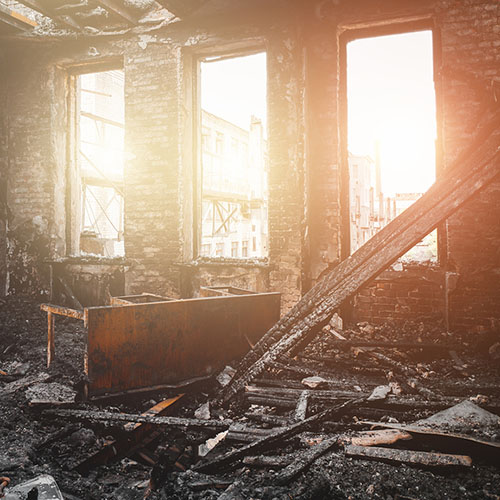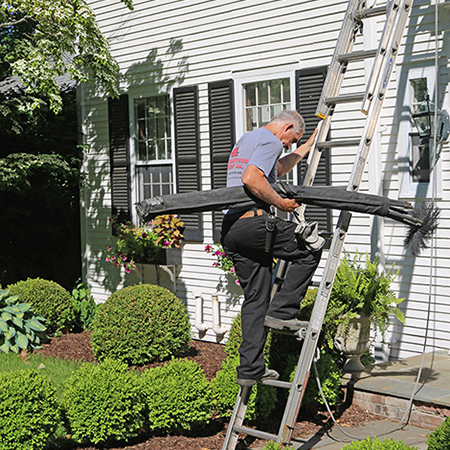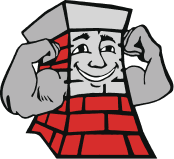Creosote & Chimney Fires: What You Must Know
 When wood burns in a fireplace, smoke rises to the relatively cooler section of the chimney where it condenses and becomes a substance known as creosote. As creosote builds up, the chance of a chimney fire increases. A full-blown fire can destroy the chimney and parts or all of the home; in the worst-case scenario, a chimney fire can be fatal to people and animals living in the home.
When wood burns in a fireplace, smoke rises to the relatively cooler section of the chimney where it condenses and becomes a substance known as creosote. As creosote builds up, the chance of a chimney fire increases. A full-blown fire can destroy the chimney and parts or all of the home; in the worst-case scenario, a chimney fire can be fatal to people and animals living in the home.
You’ll know when you have a big chimney fire. But you may not be aware of smaller fires that start and go out on their own.
Signs & results of a chimney fire
According to the Chimney Safety Institute of America, there are four key signs of a fire in the chimney:
- A deep rumbling, like a distant freight train
- Popping and cracking sounds
- Large amounts of thick smoke exiting the chimney
- A hot, intense odor
Even small, brief chimney fires can have serious implications. Burning as hot as 2000 degrees, they can crack flue tiles, melt mortar, lead to the collapse of the chimney liner and put adjacent combustible materials of the home at risk. Too often, these fires and the damage they cause go undetected until a very dangerous situation exists.
Excess creosote = more fuel for a fire
It’s impossible to avoid having creosote in your chimney, but you can keep it to a minimum by having your chimney cleaned once a year by a certified chimney sweep.
You also can take these steps to prevent large amounts of creosote from forming:
1. Ensure that the air supply within the fireplace/chimney system is not hampered
The proper amount of drafting air will channel smoke through the chimney faster, which means less smoke will be hanging around in the flue to condensate and turn into creosote.
Optimize drafting by making sure the damper is fully open and glass fireplace doors aren’t tightly shut. Additionally, enlist the services of a trained chimney sweep to keep the chimney flue free of draft-impeding obstructions such as leaves, twigs, animals nests and other debris. Remember: the clearer the path, the faster the draft.
2. Burn only seasoned wood
Dry (seasoned) wood burns more thoroughly and emits far less creosote-causing smoke than wet (unseasoned) wood. Firewood you buy likely will have been seasoned; if you cut your own wood, let it dry in a covered area for six and possibly as many as nine months.
Test the logs for dryness by banging two of them together – a sharp, cracking sound indicates they’re dry; a dull thud indicates they are not. You also can buy a wood moisture meter from many hardware, craft and home stores.
 The next step
The next step
If you suspect or know you’ve had a chimney fire, you should schedule a thorough chimney inspection as soon as possible and before using the fireplace again. Trained chimney inspectors have the tools and training to assess every inch of your chimney and its components. If fire damage is discovered, repairs can be made in order to restore the chimney to a safe operational state.
Northeastern Chimney of West Hartford, CT, is ready to help with all your chimney needs including chimney inspection, chimney cleaning and chimney repair/rebuilding. Count on our CSIA-certified technicians for the best in service and workmanship when your chimney has been compromised by a fire. Get your questions answered or schedule an appointment at (860) 233-5770.


